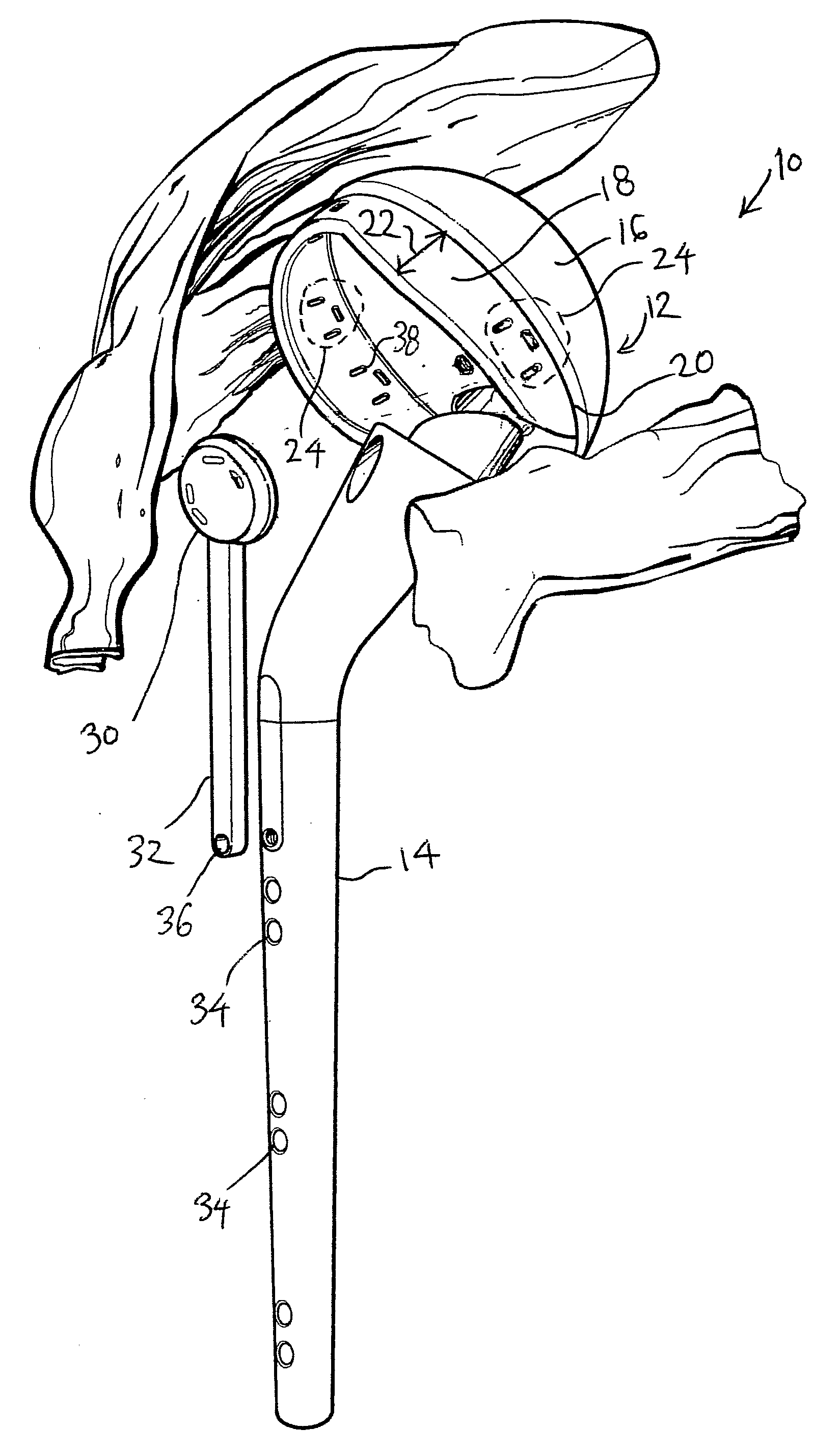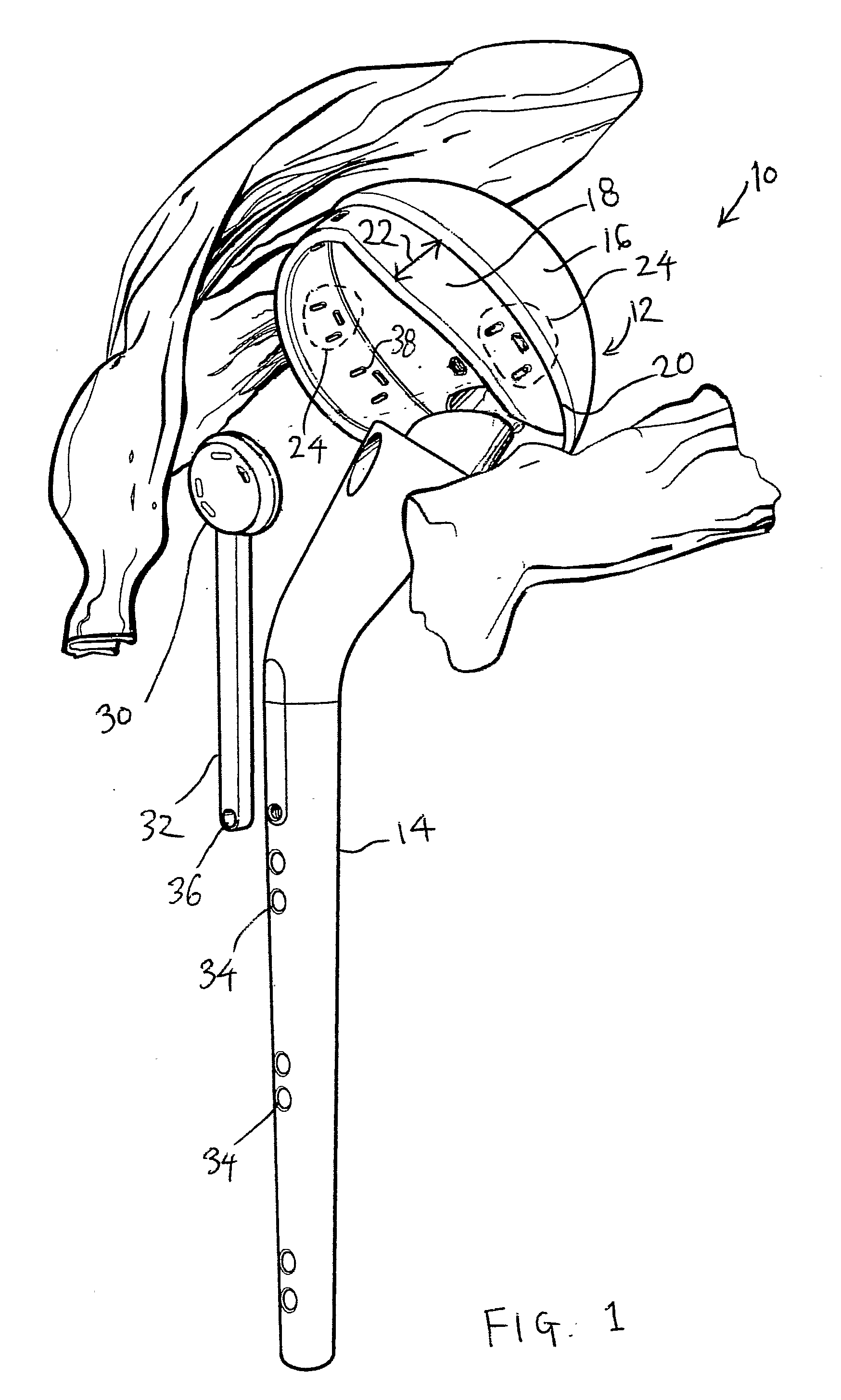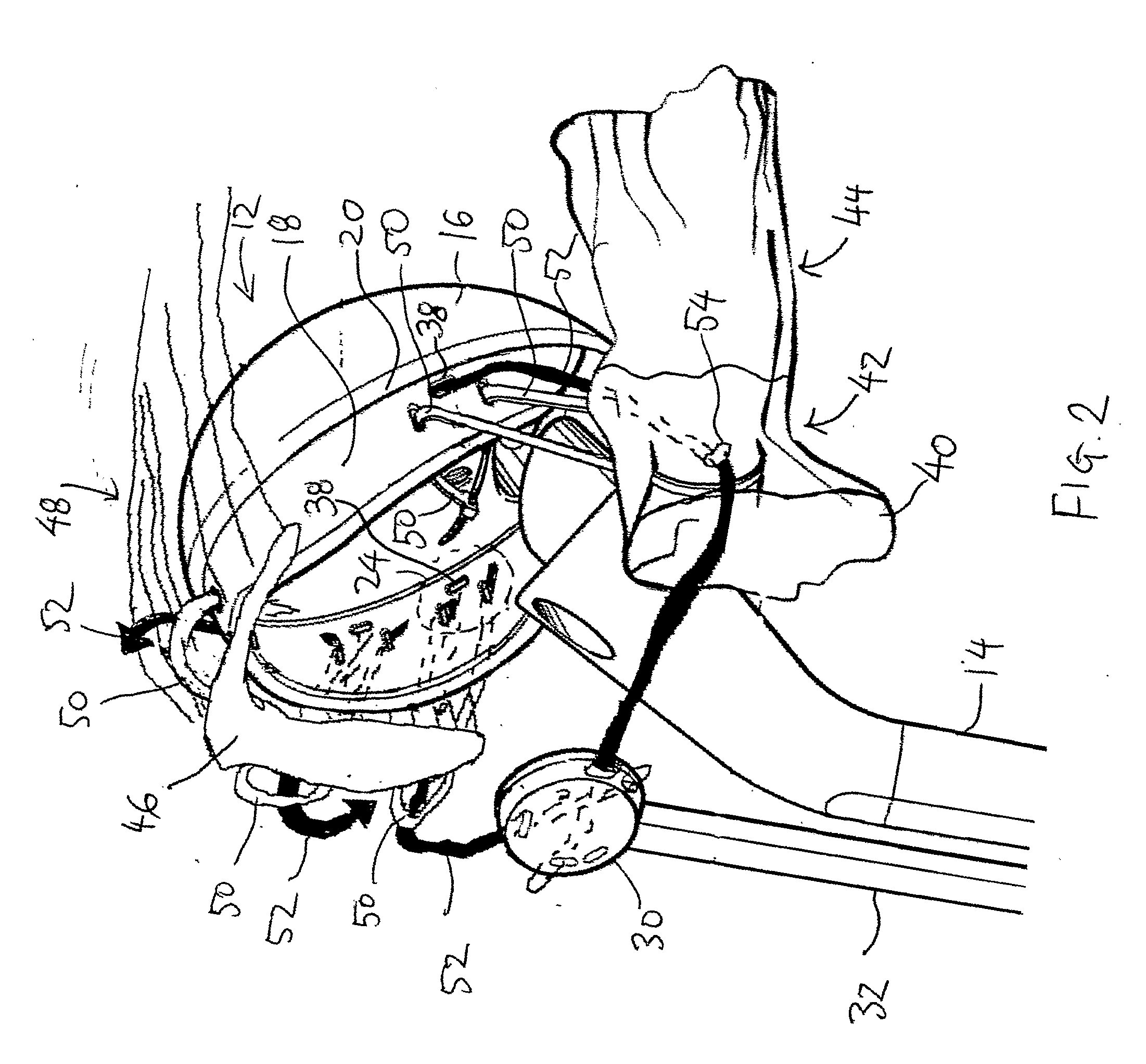Shoulder replacement
a shoulder and prosthesis technology, applied in the field of shoulder replacement prosthesis, can solve the problems of pain or discomfort for patients, lack of mobility in the joint, and inability to replicate the anatomical configuration of the replacement shoulder,
- Summary
- Abstract
- Description
- Claims
- Application Information
AI Technical Summary
Benefits of technology
Problems solved by technology
Method used
Image
Examples
Embodiment Construction
[0027]FIG. 1 shows the main components of the prosthesis of the invention.
[0028]The prosthesis 10 comprises a head 12 for replacing the humeral head, and a connection shaft 14. The head has a domed portion 16 and a flange 18 extending or positioned from an end region 20 of the domed portion.
[0029]This end region 20 is the interface between the domed portion 16 and the flange 18, and corresponds to the limit of the cartilage surface of the humerus head. The end region thus defines the anatomical neck of the humeral head. The domed portion 16 corresponds in shape to the head of a conventional shoulder implant prosthesis. The shape of the end region 20 is essentially circular and lies in a plane, so that the domed portion has a shape which is essentially a portion of a sphere defined by dissecting a sphere with a plane.
[0030]The flange 18 extends or is positioned from this interface 20 and substantially defines a portion of a quasi-cylinder, which approximates the shape of insertion po...
PUM
 Login to View More
Login to View More Abstract
Description
Claims
Application Information
 Login to View More
Login to View More - R&D
- Intellectual Property
- Life Sciences
- Materials
- Tech Scout
- Unparalleled Data Quality
- Higher Quality Content
- 60% Fewer Hallucinations
Browse by: Latest US Patents, China's latest patents, Technical Efficacy Thesaurus, Application Domain, Technology Topic, Popular Technical Reports.
© 2025 PatSnap. All rights reserved.Legal|Privacy policy|Modern Slavery Act Transparency Statement|Sitemap|About US| Contact US: help@patsnap.com



